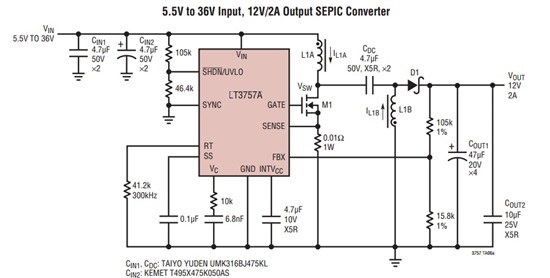Dear Sir
LT3757A could use SEPIC structure to do buck-boost 5.5V~36V to 12V/2A ,Does TI have any reference design can replace LT3757A by SEPIC structure?
I also see LM25118's reference design can do 4V~36V to 12V/3A ,but LM25118 need to use more MOSFET and Diode
What's the main different or benefit between LM25118 and LT3757A ,seems like both of them can do the same thing


